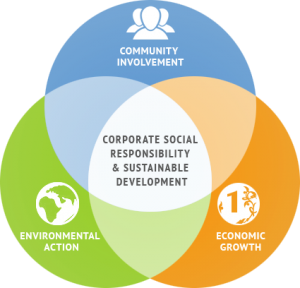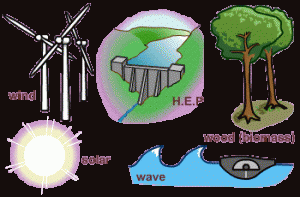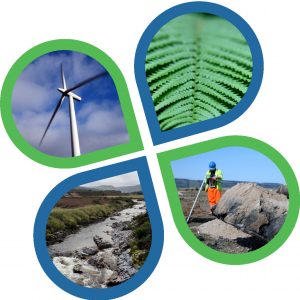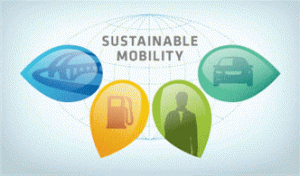There are many definitions of sustainable development, including this landmark one which first appeared in 1987:
“Development that meets the needs of the present without compromising the ability of future generations to meet their own needs.”
— from the World Commission on Environment and Development’s (the Brundtland Commission) report Our Common Future (Oxford: Oxford University Press, 1987).
But what does this mean? What are the needs of the present? Take a minute and jot down five to ten needs that you have in your own life.
Have you listed any needs that conflict with one another? For example, if you listed clean air to breathe, but also listed a car for transportation, your needs might conflict. Which would you choose, and how would you make your decision? If within ourselves, we have conflicting needs, how much is that multiplied when we look at a whole community, city, country, world? For example, what happens chiefessays.net when a company’s need for cheap labor conflicts with workers’ needs for livable wages? Or when individual families’ needs for firewood conflict with the need to prevent erosion and conserve topsoil? Or when one country’s need for electricity results in acid rain that damages another country’s lakes and rivers?
How do we decide whose needs are met? Poor or rich people? Citizens or immigrants? People living in cities or in the countryside? People in one country or another?You or your neighbor? The environment or the corporation? This generation or the next generation? When there has to be a trade off, whose needs should go first?
The long and the short of itPeople concerned about sustainable development suggest that meeting the needs of the future depends on how well we balance social, economic, and environmental objectives–or needs–when making decisions today. Some of these needs are itemized around the puzzle diagram.
What social, economic, or environmental needs would you add to the puzzle?
Many of these objectives may seem to conflict with each other in the short term. For example, industrial growth might conflict with preserving natural resources. Yet, in the long term, responsible use of natural resources now will help ensure that there are resources available for sustained industrial growth far into the future.
Studying the puzzle raises a number of difficult questions. For example, can the long term economic objective of sustained agricultural growth be met if the ecological objective of preserving biodiversity is not? What happens to the environment in the long term if a large number of people cannot afford to meet their basic household needs today? If you did not have access to safe water, and therefore needed wood to boil drinking water so that you and your children would not get sick, would you worry about causing deforestation? Or, if you had to drive a long distance to get to work each day, would you be willing to move or get a new job to avoid polluting the air with your car exhaust? If we don’t balance our social, economic, and environmental objectives in the short term, how can we expect to sustain our development in the long term?
What sustainable development dilemmas do you and your family face in your everyday lives?
Source:www.worldbank.org

 temperature. Installing fluorescent lights or natural skylights reduces the amount of energy required to attain the same level of illumination compared with using traditional incandescent light bulbs. Compact fluorescent lights use one-third the energy of incandescent lights and may last 6 to 10 times longer. Improvements in energy efficiency are most often achieved by adopting a more efficient technology or production process.
temperature. Installing fluorescent lights or natural skylights reduces the amount of energy required to attain the same level of illumination compared with using traditional incandescent light bulbs. Compact fluorescent lights use one-third the energy of incandescent lights and may last 6 to 10 times longer. Improvements in energy efficiency are most often achieved by adopting a more efficient technology or production process. ontinually replenished such as sunlight, wind, rain, tides, waves and geothermal heat. About 16% of global final energy consumption comes from renewable resources, with 10% of all energy from traditional biomass, mainly used for heating, and 3.4% from hydroelectricity. New renewables (small hydro, modern biomass, wind, solar, geothermal, and biofuels) accounted for another 3% and are growing very rapidly. The share of renewables in electricity generation is around 19%, with 16% of electricity coming from hydroelectricity and 3% from new renewables.
ontinually replenished such as sunlight, wind, rain, tides, waves and geothermal heat. About 16% of global final energy consumption comes from renewable resources, with 10% of all energy from traditional biomass, mainly used for heating, and 3.4% from hydroelectricity. New renewables (small hydro, modern biomass, wind, solar, geothermal, and biofuels) accounted for another 3% and are growing very rapidly. The share of renewables in electricity generation is around 19%, with 16% of electricity coming from hydroelectricity and 3% from new renewables. world. As per Jay et al.(2006), EIA as it is practiced today, is being used as a decision aiding tool rather than decision making tool. There is growing dissent on the use of EIA as its influence on development decisions is limited and there is a view it is falling short of its full potential.There is a need for stronger foundation of EIA practice through training for practitioners, guidance on EIA practice and continuing research.
world. As per Jay et al.(2006), EIA as it is practiced today, is being used as a decision aiding tool rather than decision making tool. There is growing dissent on the use of EIA as its influence on development decisions is limited and there is a view it is falling short of its full potential.There is a need for stronger foundation of EIA practice through training for practitioners, guidance on EIA practice and continuing research. attempt is made by stating that ‘Sustainable transportation is about meeting or helping meet the mobility needs of the present without compromising the ability of future generations to meet their needs’. By the way, that article does get you somewhere – it is quite exhaustive.
attempt is made by stating that ‘Sustainable transportation is about meeting or helping meet the mobility needs of the present without compromising the ability of future generations to meet their needs’. By the way, that article does get you somewhere – it is quite exhaustive.